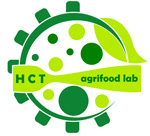The most abundant flavonoids in citrus peel, hesperidin and naringin, were extracted via hydrodynamic cavitation at the rate of 60%, which is more than triple the rate of the next “green” extraction method. Both hesperidin and naringin were attributed strong antioxidant and anti-mutagenic activities.
Hesperidin was also attributed a strong binding affinity with the main receptors of coronaviruses, including SARS-CoV-2, higher than most of reference antiviral drugs. Along with the absence of cytotoxicity, hesperidin was suggested for the treatment of COVID-19 as well as for broad-spectrum prophylaxis.
Naringin was attributed a good binding affinity with the receptors of SARS-CoV-2, and especially a unique activity in the regulation of the over-reaction produced by the innate immune system, leading to the restraint of the harmful cytokine storms.
Overall, the synergistic effects of different flavonoids, each endowed with unique and specialized biological activities, was deemed the most effective in vivo, as is emerging from the success of certain complex recipes typical of traditional Chinese medicine.
The well-known bioavailability issue affecting most flavonoids, among which hesperidin (low level of availability in serum and tissues after oral ingestion and mainly due to low solubility), was solved by means of the hydrodynamic cavitation processes. HC processes prevented the particles from agglomerating, and induced the conjugation of such flavonoids with the pectin, providing a natural and bioactive carrier able to overcome the gastro-intestinal degradation and to deliver the bioactive compounds to blood and tissues.
Beyond the oral administration of the integral aqueous extracts as such, or in the form of pectin tablets manufactured after pectin lyophilization, the availability of fine-sized, functionalized pectin powder could lead to its use for inhalation therapy, delivering the bioactive compounds directly to the targets – the lung epithelial cells.
Of course, in vitro, in vivo and clinical trials should be performed in order to assess the prophylactic or therapeutic activity against COVID-19 and the respective effective doses.
For further information, refer to:
Meneguzzo, F.; Ciriminna, R.; Zabini, F.; Pagliaro, M. Review of Evidence Available on Hesperidin-Rich Products as Potential Tools against COVID-19 and Hydrodynamic Cavitation-Based Extraction as a Method of Increasing Their Production. Processes 2020, 8, 549. https://doi.org/10.3390/pr8050549
